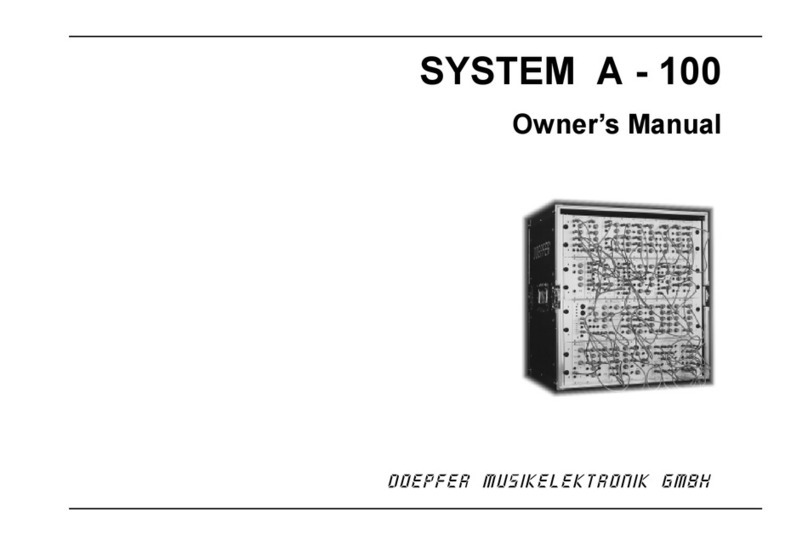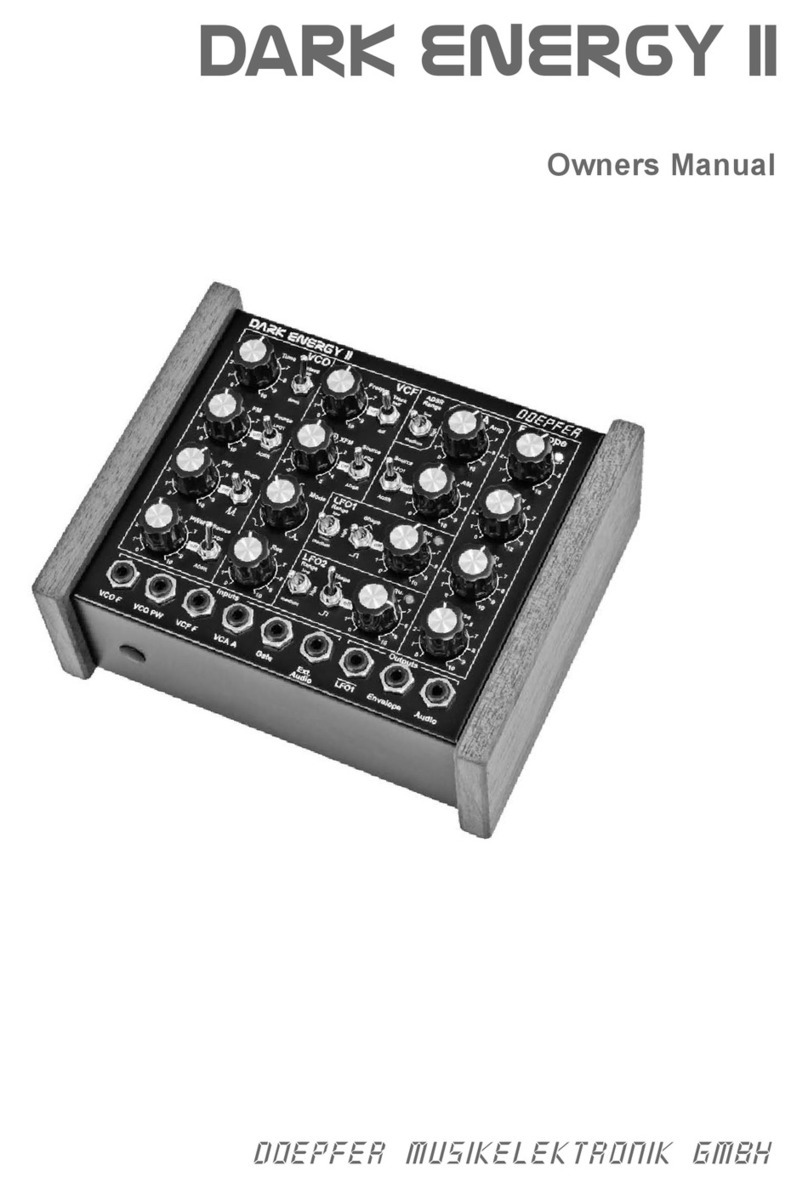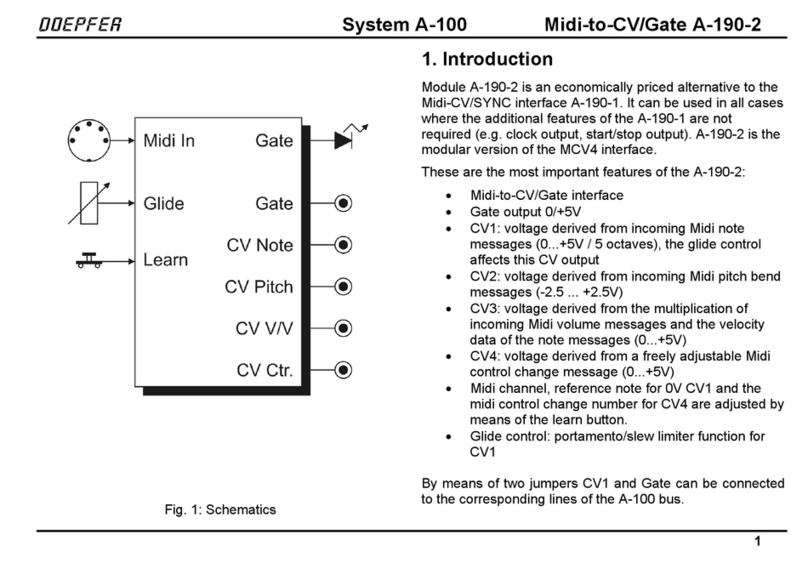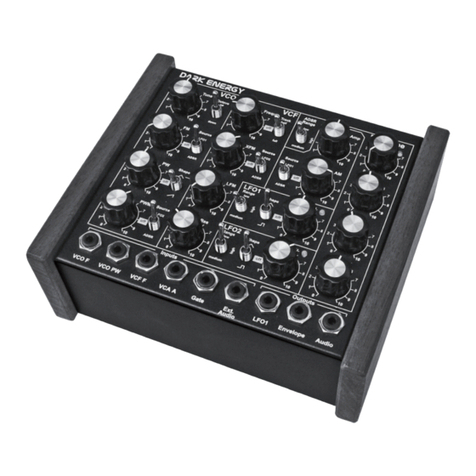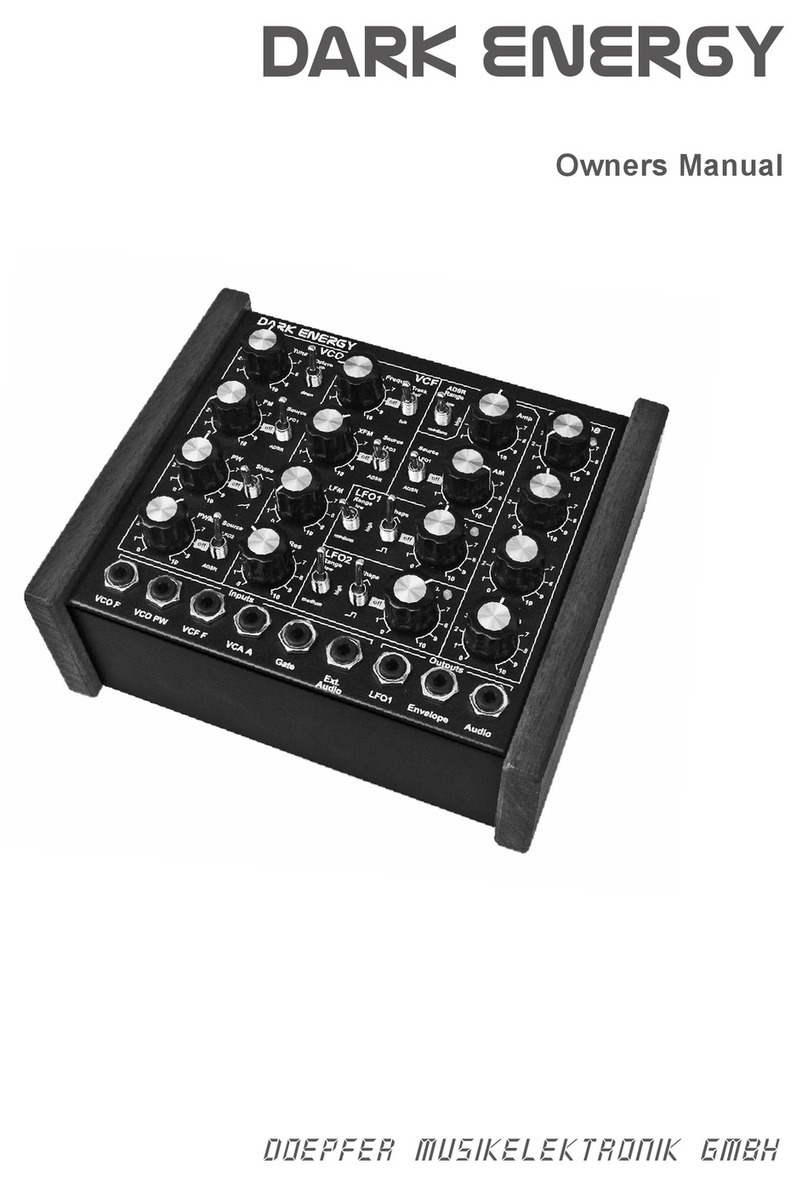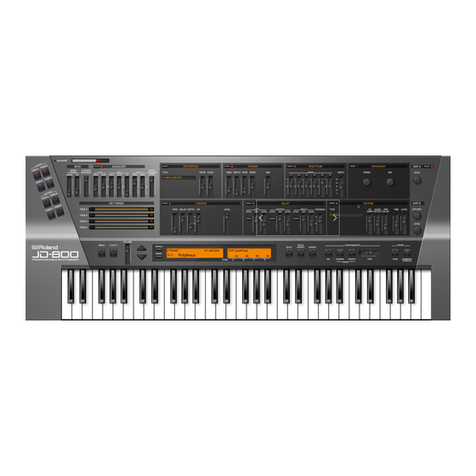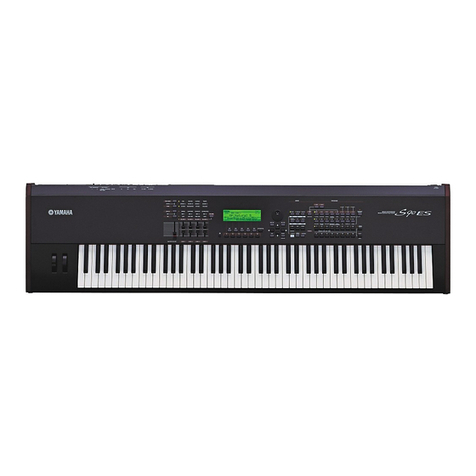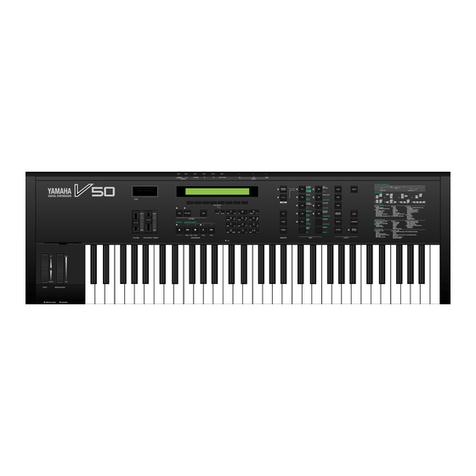
DARK ENERGY II - Additional Technical Information – Page 6
Function of the Jumpers and Trimming Potentiometers (Dark Energy II - Interface/Supply Board):
Name Function Explanation Factory default
JP1 Bus Connector 16 pin connection to voice board
(compatible to A-100 bus) connected to
voice board via
ribbon cable
JP2 Gate bus Connects the Gate line of JP1 to the gate output of the USB/Midi
interface installed
JP3 CV1 bus Connects the CV line of JP1 to the CV1 output of the USB/Midi
interface installed
JP4 Glide Option This pin header can be used to install the glide option instead of the
jumper. For this a rotary potentiometer (1M log) has to connected to
the two pins. The glide option is available from your local
representative or dealer. It consists of a 1M potentiometer with Dark
Energy style knob and nut, 2-wire cable and 2-pin connector. All parts
are assembled, no soldering required.
installed
JP5 Midi Out This two pin connector is a Midi Output and can be used to daisy-
chain two DARK ENERGY via Midi Out/Midi In. For this the Midi Out
of the first device has to be connected to Midi In of the second device
via a suitable two wire cable. The first unit has to be set into the
"Stack Mode" (details in the user's guide). The left pin of JP5 is GND,
the right pin is Midi Out
open
JP6 Midi In This two pin connector in a Midi Input and can be used to daisy-chain
two DARK ENERGY via Midi Out/Midi In. For this the Midi Out of the
first device has to be connected to Midi In of the second device via a
suitable two wire cable. The left pin of JP6 is GND, the right pin is
Midi In.
open
JP7/
JP8 Firmware Update To these single row pin headers several jumpers can be installed in
different ways. In the standard mode two jumpers have to be installed
as shown in the sketch.
Only if the firmware of the device has to be updated the positions of
the jumpers have to be changed. As soon as a new firmware is
available the corresponding information will be published.
two jumpers
installed as
shown in the
sketch
JP9 Reset/Program This jumper is used only during the programming in the factory. It has
to remain always in the position shown in the sketch ! installed (left
position)
JP10 Function of socket CV4 With this jumper one can select if the socket labelled "CV4" outputs
really CV4 or if it is used as a second audio output (in parallel to the
audio output socket at the front panel). In the upper position it works
as CV4 (factory setting), in the lower position as audio output.
installed (upper
position)
JP11 not used this pin header is not assembled (it would be on the bottom side of
the pcb) not used
JP12
A/B Voltage range of CV2
(pitch bend) These jumpers are used to define the output voltage range of CV2
(pitch bend):
JP12A installed: CV2 range ~ – 2.5...+2.5V (symmetrical around 0V)
JP12B installed: CV2 range ~ 0...+5V (only positive voltage)
Only one of two jumpers has to be installed, never both !
JP12A installed
(-2,5...+2,5V)
JP13 Gate Gate output of the interface for optional expansions -
JP14 Power Supply power supply connector for optional expansions, from left to right:
• -12V
• GND
• +12V
max. current 20 mA !
-
JP15 CV2/CV3 CV2/CV3 outputs for optional expansions, from left to right:
• CV2
• CV3
-
P1 CV1 Scale adjusts the 1V/octave characteristics of CV1 adjusted to
1.00V/octave
P2 Glide optional rotary potentiometer for glide function (portamento) of CV1,
is connected to JP4 (instead of the jumper), recommended value: 1M
logarithmic (A1M)
not installed
